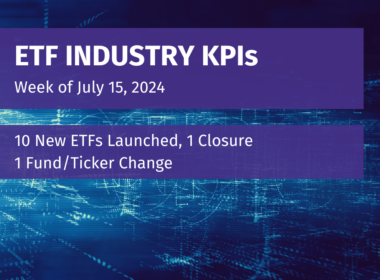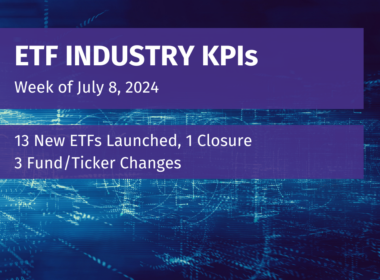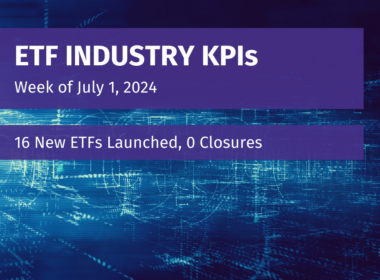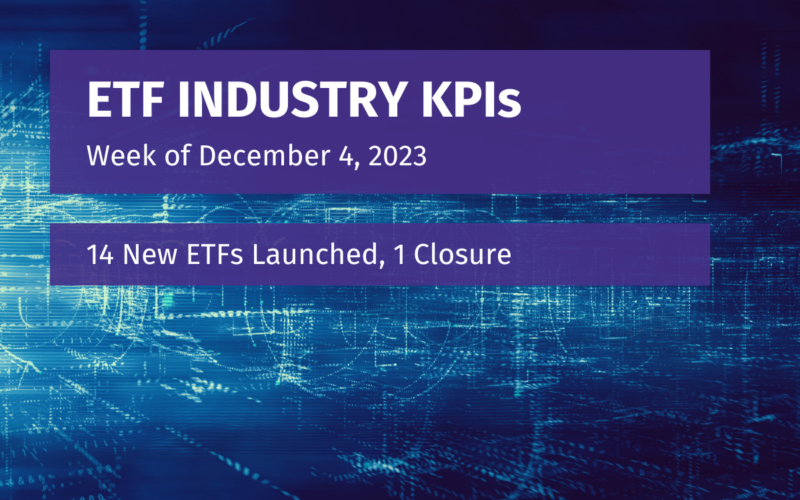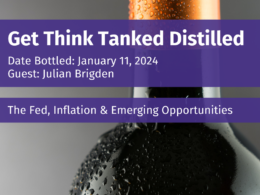Throughout the 2020s, the global economy has been dominated by cycles. First, it was COVID. Then, it was high inflation. Now, it’s the potential recession fueled by tighter monetary policy and a global economic slowdown. Being able to understand what trends are occurring, when they’re beginning to change and how to position yourself to benefit is something that Lakshman Achuthan, the Co-Founder of the Economic Cycle Research Institute, has been doing for decades. He joins the ETF Think Tank to offer his outlook for the current global cycle and where investors may be missing the signs.
One area that Achuthan is paying attention to right now is oil. While speculation can cause some price disruptions, oil (when taken together with energy, textile and primary metals prices) have been good indicators of where we are in the global industrial growth cycle. While the services sector can be a bit more localized, the manufacturing sector is where you tend to have more of a global cycle. These commodity prices tend to be a slightly leading indicator of industrial production growth and, right now, it seems like things need to flush out a little bit.
Achuthan also thinks that economically there may be some bouncing along the bottom before there’s a genuine recovery. We originally saw activity in China pop when COVID restrictions were lifted, but it died out because there was no big cyclical upturn. Europe experienced a similar short-term bounce when the anticipated freezing winter didn’t turn out to be as bad as expected, but that too was temporary. In the United States, growth rates improved, which provided a lift, but forward-looking indicators are starting to soften. The China/Europe/U.S. sequence of events didn’t quite line up, but they were within range. Currently, interest rates are a primary driver. Regardless of what they do from here, central banks have already tightened and there’s still going to be some lagged effect from that, which isn’t over. There are some glimmers of light, but the path is still very uncertain.
Achuthan also notes that cycles in inflation and cycles in growth are very different and it can be confusing when they’re occurring at the same time. In terms of policy, the government has already done more than what was expected, but the policy levers could be pulled because rates were low. It’s going to be much tougher today given how much higher rates are, but we could see the government still pushing the limits of fiscal responsibility to see what they can pull off.
Today, we’ve got inflation coming down, but we’ve introduced sticky wage inflation on the services side. That’s difficult to knock down and Powell should be concerned about this. If we manage to pull off the soft landing, which Achuthan thinks is unlikely, the cyclical trough in inflation still could end up being higher because of the higher starting point. If you consider that fiscal spending has increased and the structural shift in the labor continues to favor further wage growth inflation, we could be in for a second bout of higher than expected inflation. One of the things that’s popping up for Achuthan right now is that the leading indicators for inflation may be getting a little bit of traction. They’re longer leading, but it’s off of people’s radars. Everybody’s pricing in a lot of rate cuts right now and the possibility of a rebound in inflation is mostly off of people’s radars, but this is something we need to pay attention to closely.
Other key takeaways:
- We’re still working through the labor supply impact of COVID, but a lot of that is finally eased. We’re now at a place where debt and deficits are huge, but Achuthan thinks the government will try to push it further. There is a limit, however, as to how far it can go.
- India & China are two markets with great potential over the next 5 years, but Achuthan thinks the trade opportunity is better with India. India has a better geopolitical environment and positive demographics. They’ve also digitized their monetary system. India likely won’t be a big manufacturing powerhouse, but it has its positives.
- Different companies will have very different experiences with AI. Tech companies will have an entirely different experience, but industrial companies will have a tougher time. The AI innovation story is enticing, but Achuthan believes that aggregate productivity growth is no good. Many countries are struggling with population growth and productivity, but AI will mitigate only some of that.
Disclosure
All investments involve risk, including possible loss of principal.
The material provided here is for informational purposes only and should not be considered an individualized recommendation or personalized investment advice. The investment strategies mentioned here may not be suitable for everyone. Each investor needs to review an investment strategy for his or her own particular situation before making any investment decision.
All expressions of opinion are subject to change without notice in reaction to shifting market conditions. Data contained herein from third-party providers is obtained from what are considered reliable sources. However, its accuracy, completeness, or reliability cannot be guaranteed.
Examples provided are for illustrative purposes only and not intended to be reflective of results you can expect to achieve.
The value of investments and the income from them can go down as well as up and investors may not get back the amounts originally invested, and can be affected by changes in interest rates, exchange rates, general market conditions, political, social, and economic developments, and other variable factors. Investment involves risks including but not limited to, possible delays in payments and loss of income or capital. Neither Tidal nor any of its affiliates guarantees any rate of return or the return of capital invested. This commentary material is available for informational purposes only and nothing herein constitutes an offer to sell or a solicitation of an offer to buy any security and nothing herein should be construed as such. All investment strategies and investments involve risk of loss, including the possible loss of all amounts invested, and nothing herein should be construed as a guarantee of any specific outcome or profit. While we have gathered the information presented herein from sources that we believe to be reliable, we cannot guarantee the accuracy or completeness of the information presented and the information presented should not be relied upon as such. Any opinions expressed herein are our opinions and are current only as of the date of distribution, and are subject to change without notice. We disclaim any obligation to provide revised opinions in the event of changed circumstances.
The information in this material is confidential and proprietary and may not be used other than by the intended user. Neither Tidal nor its affiliates or any of their officers or employees of Tidal accepts any liability whatsoever for any loss arising from any use of this material or its contents. This material may not be reproduced, distributed, or published without prior written permission from Tidal. Distribution of this material may be restricted in certain jurisdictions. Any persons coming into possession of this material should seek advice for details of and observe such restrictions (if any).



